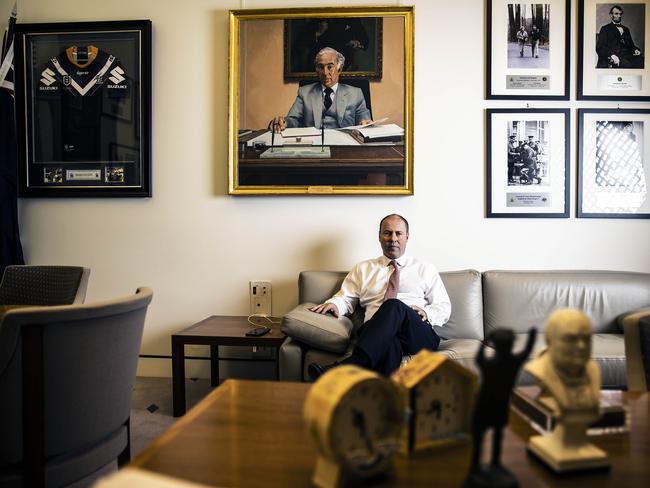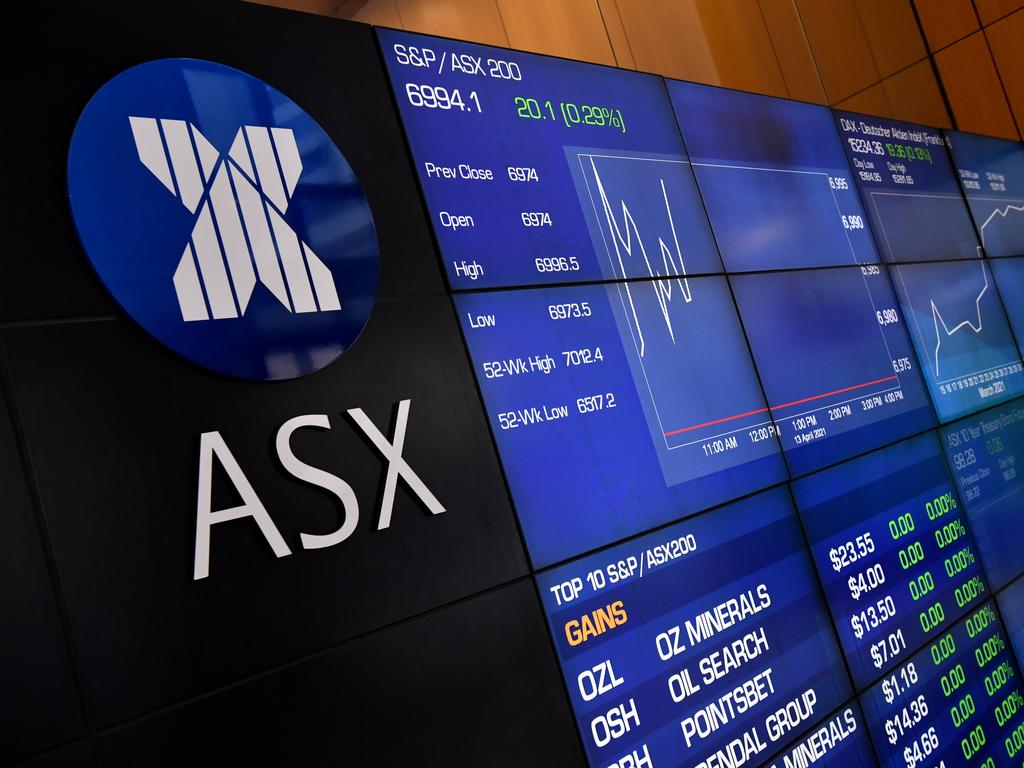Budget 2021: Jobs growth ‘key to push recovery’
Josh Frydenberg will put jobs growth at the centre of next month’s budget, ahead of immediate fiscal repair.

Josh Frydenberg will put jobs growth at the centre of next month’s budget, ahead of immediate fiscal repair, in a bid to continue driving the nation’s employment recovery after Australia’s unemployment rate plunged to 5.6 per cent.
On the back of Australia’s COVID-19 economic recovery, which is fuelling booming property prices, consumer confidence and business conditions, the Treasurer on Thursday told the private sector to “take the baton and run”.
Mr Frydenberg also declared confidence in the nation’s faster than expected economic recovery “despite challenges” with the vaccine rollout.
Ahead of the May 11 budget, Mr Frydenberg said the government remained focused on getting more Australians into jobs before tackling fiscal repair, with about 1.35 million recipients claiming JobSeeker and Youth Allowance payments at the end of February.
The Australian Bureau of Statistics labour market update on Thursday showed the country recorded its sixth consecutive month of jobs growth in March, with employment lifting by 70,700 ahead of the $90bn JobKeeper scheme and coronavirus supplement payments ending last month.
With Scott Morrison wanting to attract more international companies to invest in Australia, Mr Frydenberg said “we’re enabling and encouraging the private sector to keep hiring, to innovate, to grow and to help lead the recovery from here”.
“We want the private sector to take the baton and run. We’re seeing a boost in investment, we’re seeing a boost in hiring, and we’re seeing a boost in household consumption, so all of that is positive,” Mr Frydenberg told The Australian.
Amid concerns over the national vaccine rollout and its potential impact on reopening international borders, Mr Frydenberg said he remained “confident that the momentum and the recovery will continue despite the challenges with the vaccine”.
Treasury assumptions in next month’s budget are expected to include predictions around the timing of the vaccine rollout and return to international travel.
“We have to follow the medical advice and be consistent, but we’ve suppressed the virus better than nearly any other country.
“(The) jobs numbers are just another proof point that the recovery is under way,” he said.
The ABS jobs data showed Western Australia accounted for almost half of the total lift in employment, with the state registering an extra 33,000 people in jobs and a 9.2 per cent jump in total hours worked.
Unemployment in WA, which has benefited from surging iron ore prices, fell from 6 per cent to 4.8 per cent, its lowest level since December 2013.
Queensland recorded the next biggest increase in jobs in March, with employment in both states well above pre-COVID levels.
With total employment rising to more than 13 million in March, the labour market has recouped all of its COVID-related losses.
Mr Frydenberg, who cited a “strong employment comeback for women” with about 80 per cent of new jobs created in March going to female workers, said the unemployment rate was now “lower than when we came to government”.
“Our economy is continuing to outperform. Let’s not forget, Treasury told me unemployment could reach as high as 15 per cent. Now it’s 5.6 per cent. In MYEFO, we had unemployment at 7.5 per cent in the March quarter, now its 5.6 per cent. GDP has recovered twice as fast, six months earlier than we expected.

“(Of the) 1.3 million people who lost their jobs or zero hours during the crisis, in net terms, all those jobs have been recovered.”
On budget repair, Mr Frydenberg said while Australia had made up ground on the “big hole in the economy created by COVID … there’s a long way to go … I’m going to make another speech on fiscal strategy before the budget, but our focus has been on comfortably below six, and we’re not comfortably below six.”
Flagging his reform priorities ahead of the budget, Mr Frydenberg said the Morrison government was “very focused on what the economy will look like on the other side of the pandemic”.
“Digital transformation, meeting the labour workforce needs, emerging industries, developing the skills sets, matching what the institutions are producing with what the private sector requires, all of that is important,” he said.
With joint standing committee on migration chair Julian Leeser leading reforms to streamline Australia’s skilled migration program, Mr Frydenberg said “We’re focused on encouraging the best and the brightest to come to Australia to bring their skills and their entrepreneurship.
“It’s not about a specific budget measure. This is a great time to capitalise on the fact that we’ve outperformed all major advanced economies.”
Mr Frydenberg said key economic trends were heading in the right direction, with consumer confidence at its highest levels in 11 years and business conditions the best on record. “And we’ve got households and businesses with $240bn on their balance sheet that was not there this time last year. If we can keep that momentum in the economy, they will continue to spend.”
Mr Frydenberg said getting more Australians into jobs was about “matching the needs in the workforce with what the educational institutions are producing … It’s about providing incentives for employers. It’s about ensuring mutual obligation is in practice so that people are moving from welfare to work when the opportunities present.
“And it’s ensuring we’ve got a flexible labour market and we don’t leave the emergency settings in place for too long.”
Mr Frydenberg said ending JobKeeper was a “line in the sand”, with the government determining it could not go on indefinitely.








To join the conversation, please log in. Don't have an account? Register
Join the conversation, you are commenting as Logout